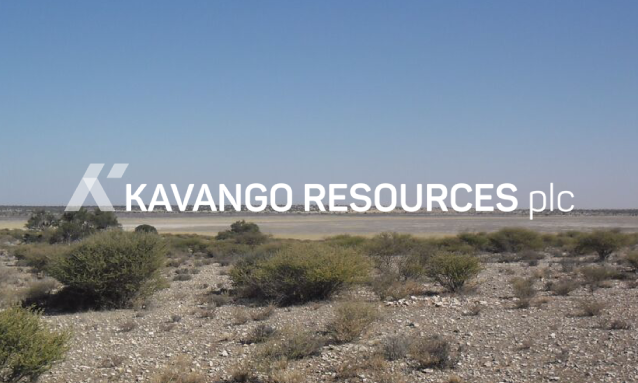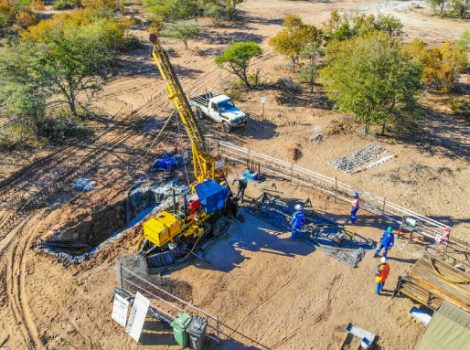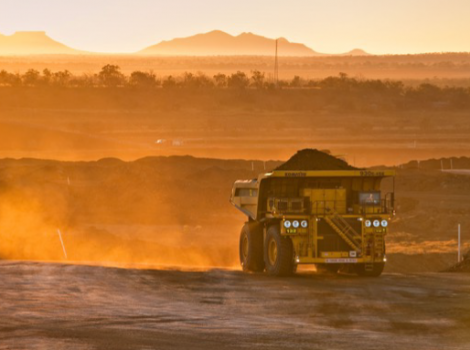
The South Ghanzi project licences lie within the Central Structural Corridor of the Kalahari Copper Belt immediately south of the town of Ghanzi. Kavango Resources PLC (LON:KAV) shares rose in early deals on Friday after an update on the South Ghanzi Project in the Kalahari Copper Belt (KCB).
The exploration company said seven conductive targets had been identified by the airborne electromagnetic (AEM) surveys conducted in February. Each anomaly represents a potential drilling target. The findings align closely with previous fieldwork conducted by Kavango and the established regional exploration model for the discovery of major copper/silver deposits within the KCB, the company told investors. The initial data interpretation suggests a range of target depths of 40 metres (m) to 400m for exploration drilling. Three of the conductors are associated with anticlines/fold structures and have been designated the highest priority targets for further exploration.
Target 36A, dubbed “Acacia”, is a 4 kilometre (km) by 4km conductor on the northern boundary of the PL 036-2020 area. It is made up of at least four individual pods of high conductivity. Soil geochemistry directly over the anomaly demonstrates elevated levels of copper – greater than 42 parts per million (ppm) and zinc (more than 75ppm).
Target 36G (“Morula”) is estimated to be about 2km wide with at least 12km of strike on a south-westerly trend along the central backbone of PL 036. AEM data and the soil geochemistry suggest this target represents the sheared and thrust faulted southern limb of the “Acacia” fold. Kavango said the soil geochemistry anomaly along the Morula target extends for over 12km and is open at both ends.
Seven 4km long soil sample lines (500m spaced with 100m spaced samples) have been completed, with four intersecting the southwest and three intersecting the northeast of Morula. The two groups of soil sample lines were 7km apart. All soil sample lines returned readings with significant concentrations of copper (38ppm to 62ppm) and zinc (59ppm to 111ppm) across the 12km soil anomaly. Seven infill soil sample lines are planned at 1km spacing, to test the extent of potential mineralisation across the Morula conductor/anomaly.
Target B (“Baobab”) is a 2km x 3km closed conductor, about 1km south-west of the Morula fold and 4km southeast of Ghanzi town within PL 036/2020, described as being in a very encouraging geological setting.
Target E (“Elephant”) lies in the southeast corner of PL 037/2020. It is a broad, 2.5km wide intense conductor with a strike of at least 6km and is open at both ends. Kavango will follow up with additional soil sampling, trenching and geological mapping ahead of a drilling programme planned for later in 2021.
“The Airborne EM programme has demonstrated that the two Ghanzi South PLs [prospecting licences] have significant potential for the discovery of copper/silver mineralisation. The generally shallow depth of the conductors is a major asset,” said Michael Foster, the chief executive officer of Kavango Resources.
“We are confident we are looking at numerous mineralised systems. The copper and zinc readings taken from Kalahari cover are promising, but we will only be able to gauge economic viability after drilling and assay testing.
“In the meantime, the acquisition of a new portable XRF analyser will speed up the soil geochemistry surveys. Trenching through shallow Kalahari cover is also possible in some areas and will assist in the geological mapping. The aim is to have a more complete understanding of the geology before a drilling programme is undertaken later in the year,” he added.
“The results to date from the South Ghanzi Project have been very promising. We are particularly encouraged by the elevated copper and zinc readings, which correlate closely with sizeable sections of the shallow depth AEM conductors.
“With the environmental management plan application progressing well, the next few months in South Ghanzi will be key,” Foster concluded.
Shares in Kavango Resources were up 3.7% at 4.25p.



